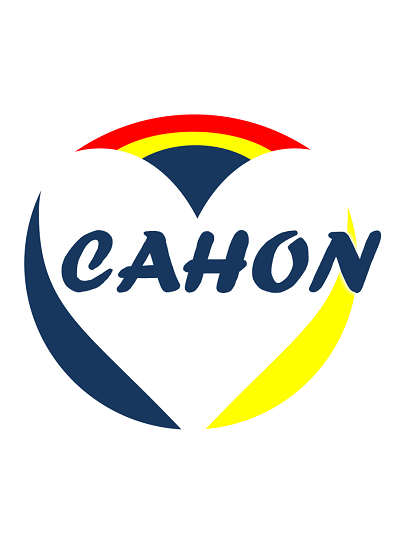跨疾病阶段的小鼠和人类多发性骨髓瘤免疫微环境单细胞转录组图谱
IF 29.5
1区 医学
Q1 HEMATOLOGY
引用次数: 0
摘要
免疫疗法对多发性骨髓瘤(MM)的长期疗效仍然难以捉摸,患者不可避免的复发就证明了这一点。这凸显了深入分析多发性骨髓瘤肿瘤免疫微环境(TME)的迫切需要。因此,一种具有代表性的免疫功能健全的 MM 小鼠模型可以提供一种宝贵的方法来研究 MM-TME 的动态变化,并揭示阻碍 MM 有效和持久治疗策略的潜在耐药机制。我们利用免疫功能健全的5T33MM小鼠模型,生成了骨髓和脾脏中MM-TME的全面单细胞RNA测序图谱,涵盖了疾病的不同阶段。通过比较分析,我们重新分析了不同疾病阶段的公开人类骨髓样本数据集,从而将小鼠数据集与 MM 患者的发病机制联系起来。通过流式细胞术,我们验证了 5T33MM 模型中疾病进展时的动态变化。此外,我们还在小鼠和人类原始样本上对有趣的目标人群以及免疫增强抗 CD40 激动剂(αCD40)疗法进行了体内外测试,并使用 5T33MM 模型进行了体内测试。在这项研究中,我们确定了小鼠和人类 MM TME 内的异质性动态变化。我们发现,MM-TME 的特点是 T 细胞增加,并伴有衰竭表型。虽然中性粒细胞在疾病早期似乎是无害的,但它们在MM发展过程中获得了促肿瘤表型。此外,传统树突状细胞(cDCs)在 MM 中的活化表型较少,这凸显了αCD40疗法等免疫增强疗法的潜力。重要的是,我们首次对αCD40疗法进行了临床前评估,成功诱导了cDC和T细胞活化,并伴有显著的短期抗肿瘤反应。这一资源为人类和小鼠 MM 疾病进展过程中的演变提供了全面而详细的免疫图谱。我们的发现有助于对患者进行基于免疫的分层,并促进新型、持久的 MM(免疫)治疗策略的开发。本文章由计算机程序翻译,如有差异,请以英文原文为准。
A single-cell transcriptomic map of the murine and human multiple myeloma immune microenvironment across disease stages
The long-term effectiveness of immunotherapies against Multiple Myeloma (MM) remains elusive, demonstrated by the inevitable relapse in patients. This underscores the urgent need for an in-depth analysis of the MM tumor-immune microenvironment (TME). Hereto, a representative immunocompetent MM mouse model can offer a valuable approach to study the dynamic changes within the MM-TME and to uncover potential resistance mechanisms hampering effective and durable therapeutic strategies in MM. We generated a comprehensive single-cell RNA-sequencing atlas of the MM-TME in bone marrow and spleen encompassing different stages of disease, using the immunocompetent 5T33MM mouse model. Through comparative analysis, we correlated our murine dataset with the pathogenesis in MM patients by reanalyzing publicly available datasets of human bone marrow samples across various disease stages. Using flow cytometry, we validated the dynamic changes upon disease progression in the 5T33MM model. Furthermore, interesting target populations, as well as the immune-boosting anti-CD40 agonist (αCD40) therapy were tested ex vivo on murine and human primary samples and in vivo using the 5T33MM model. In this study, we identified the heterogenous and dynamic changes within the TME of murine and human MM. We found that the MM-TME was characterized by an increase in T cells, accompanied with an exhausted phenotype. Although neutrophils appeared to be rather innocuous at early disease stages, they acquired a pro-tumorigenic phenotype during MM progression. Moreover, conventional dendritic cells (cDCs) showed a less activated phenotype in MM, underscoring the potential of immune-boosting therapies such as αCD40 therapy. Importantly, we provided the first pre-clinical evaluation of αCD40 therapy and demonstrated successful induction of cDC- and T-cell activation, accompanied by a significant short-term anti-tumor response. This resource provides a comprehensive and detailed immune atlas of the evolution in human and murine MM disease progression. Our findings can contribute to immune-based patient stratification and facilitate the development of novel and durable (immune) therapeutic strategies in MM.
求助全文
通过发布文献求助,成功后即可免费获取论文全文。
去求助
来源期刊
CiteScore
48.10
自引率
2.10%
发文量
169
审稿时长
6-12 weeks
期刊介绍:
The Journal of Hematology & Oncology, an open-access journal, publishes high-quality research covering all aspects of hematology and oncology, including reviews and research highlights on "hot topics" by leading experts.
Given the close relationship and rapid evolution of hematology and oncology, the journal aims to meet the demand for a dedicated platform for publishing discoveries from both fields. It serves as an international platform for sharing laboratory and clinical findings among laboratory scientists, physician scientists, hematologists, and oncologists in an open-access format. With a rapid turnaround time from submission to publication, the journal facilitates real-time sharing of knowledge and new successes.

 求助内容:
求助内容: 应助结果提醒方式:
应助结果提醒方式:


